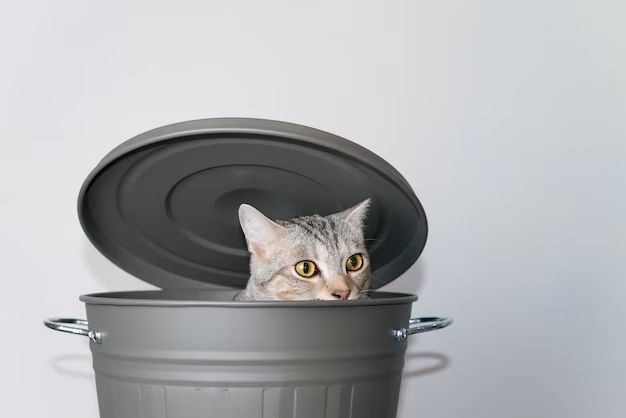Page Contents
Quick Answer
No, you should not put cat litter in paint. Cat litter is made from absorbent materials like clay or silica gel that are meant to soak up liquids. Adding it to paint would negatively affect the paint’s texture, consistency, and ability to properly coat surfaces. There are better alternatives for thickening and texturing paint.
Explaining Why Cat Litter Should Not Go In Paint
Here are some key reasons why cat litter and paint do not mix:
Cat Litter Absorbs Liquids
The main purpose of cat litter is to absorb moisture and odors. Litters made from clay clump together when wet, while silica gel varieties soak up liquid into the numerous pores within the tiny beads. When you add cat litter to paint, it will act as a desiccant and soak up the liquid components like binders and solvents. This can make the paint much thicker, but it also negatively impacts the paint’s ability to flow and adhere properly.
Texture and Consistency Issues
Pouring cat litter into a can of paint will drastically alter the texture and make it grainy. Paint mixed with cat litter will be thick, heavy, and hard to brush or roll on smoothly. The cat litter pieces will create an uneven, pebbly texture on painted surfaces. The paint is also likely to have poor leveling and leave an irregular, uneven coating.
Problems With Adhesion and Durability
The thickened texture from cat litter may cause the paint to not stick well to surfaces. Paint with a thinner consistency is better able to penetrate and grip the surface underneath. If the paint does not adhere correctly, it can begin to chip and peel off prematurely. Adding something like cat litter that soaks up the binders can also reduce the paint’s durability and weather resistance over time.
Unsafe for Many Household Uses
While cat litter may seem like an easy DIY thickener, it is not labeled as a paint additive and has potential health risks. Cat litter contains silica dust that should not be inhaled. Paint is often used in living spaces and the silica particles could get stirred up into the air during application. Artcraft and hobby paints are specially formulated to be safe and usable by the general public.
Better Thickeners for Paint
Instead of using cat litter, here are some safer, more effective options for thickening paint:
Paint Thickener
You can purchase specialty paint thickeners and texturing gels that are designed for use in art, craft, and hobby paints. These maintain the acrylic binders to keep paints durable. They come in different varieties like pourable gels or moldable pastes.
Cornstarch
A small amount of cornstarch can thicken acrylic paints. Start with 1/2 teaspoon per 1 cup of paint and adjust as needed. Cornstarch particles will maintain a smooth flow instead of clumping.
Cellulose Fiber
Cellulose fibers from wood pulp help increase paint’s viscosity. They are sold as powders you can stir into paint. Unlike cat litter, they fully dissolve into acrylic media.
Sawdust
Fine sawdust or wood flour can provide texture similar to sand mixed into paint. Start with a 1:4 ratio of sawdust to paint. Strain out any large particles for smoother results.
Baby Powder
Unscented baby powder contains talc that will thicken paint. Start with 1/2 teaspoon per cup of paint. The powder dissolves into the binder without altering adhesion.
Key Takeaways
– Do not add cat litter to paint – it will ruin the texture and prevent proper adhesion.
– Cat litter soaks up liquid, making paint too thick for brushing or rolling.
– Paint mixed with cat litter will have poor flow, uneven coating, and fall off surfaces.
– Use paint thickeners designed for arts & crafts, or harmless household items like cornstarch instead.
Conclusion
While cat litter may seem like a convenient way to thicken and add texture to paint, it is not a suitable additive. The absorbent properties cause problems with the paint’s viscosity, finish, and ability to properly adhere to surfaces. For best results, use specialty paint thickeners or common household items like cornstarch or sawdust in small amounts. Steer clear of pouring cat litter in paint unless you want a thick, clumpy, uneven mess with poor durability.
